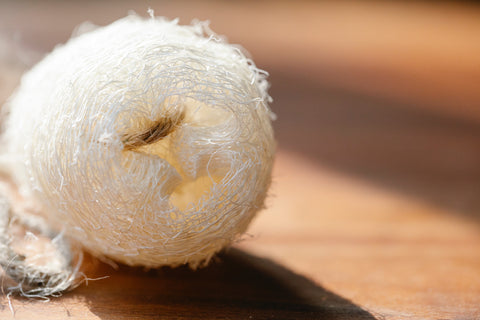How to Plant, Grow, and Harvest Loofah Sponges

Plant-based loofahs are rapidly becoming a favorite in households worldwide, boasting both ecological and personal care benefits. Originating from the fruit of the luffa plant, a vine in the cucumber family, these natural scrubbers offer a sustainable and biodegradable alternative to traditional bath sponges. While many might associate the term "sponge" with the sea's soft creatures, it's essential to distinguish between these two types. Animal sponges are harvested from the ocean floor, presenting ecological concerns and allergenic risks for some users. Conversely, plant loofah sponges thrive on solid ground, positioning them as an environmentally-conscious choice that champions sustainable agriculture. You can even plant, grow and harvest them in your garden. Their fibrous texture not only aids in exfoliation but also ensures a refreshing and invigorating shower experience.
Setting the Foundation: Tips for Planting Seeds
Initiating the growth of a loofah plant begins with understanding its foundational needs. Soil plays a pivotal role in this process. They prefer well-draining soil with a pH between 6.0 and 7.5 for optimal growth. This mildly acidic to neutral range provides the perfect environment for these plants to thrive. Plant seeds in a location that receives at least 6-8 hours of direct sunlight daily. After planting the seeds, keep the soil consistently moist but not waterlogged. Overwatering can stifle growth or even lead to rot. Provide ample room for each plant, spacing them about 3-4 feet for air circulation. For indoor cultivation, pots with good drainage are essential. Place them near windows that usher in abundant natural light, or consider using grow lights if natural sunlight is limited.
Nurture and Flourish: Guiding the Plant to Maturity
Cultivating these plants requires attention to detail. One of the primary factors that influence their growth is the watering routine. They neither fancy being drenched nor left too dry. Regularly check the soil's moisture level by touching it. If the top inch feels dry, it's time to water.
Positioning the plants to receive early morning sun offers the light they need. If it is possible, ensure they're sheltered from harsh midday rays. That will prolong their vitality and boost their growth.
As for nutrition, while loofahs aren't overly demanding, they'll appreciate a helping hand. Opt for an organic, balanced fertilizer every 4-6 weeks during the growing season. For those looking to keep things natural, compost or worm castings make excellent soil enrichers. Incorporating these into the soil provides essential nutrients, fostering stronger roots and lush foliage.
Can You Grow Them in Indoor Gardens?
Many plant enthusiasts wonder if they can add loofah plants to their indoor green collection. The answer is yes. You can plant, grow, and harvest them in your home, with some nuances to remember.
Benefits of indoor cultivation:
- Controlled Environment:you can control temperature and humidity, reducing the risk of weather-related damage.
- Year-Round Growth:Unlike outdoor gardens restricted by seasons, indoor they can grow consistently throughout the year.
Challenges:
- Lighting Needs:Ensure the plant receives 6-8 hours of light daily. Consider investing in LED grow lights if your home lacks sunlight.
- Space Restrictions:These plants grow tall. Vertical space is as important as horizontal space. Opt for trellises or supports to guide their growth.
- Pot Selection:Choose pots with efficient drainage to prevent over-watering. Deep ones are preferable, as loofahs have long taproots.
Addressing these aspects will help you enjoy the unique experience of nurturing these plants within your home.
"How to Plant, Grow, and Harvest Loofah Sponges": The Harvesting Chapter
A mature loofah ready for harvest has dry and brownish skin and feels lightweight. Another indicator is how easily you can peel off the outer layer; if it separates without much effort, it is ripe for the picking.
Steps to Harvest:
- Gentle Approach:Using sharp pruning shears, make a clean cut to detach the loofah from the vine. Avoid tugging or twisting to prevent plant injury.
- Peeling Off:Once harvested, the outer skin can be easily peeled away, revealing the fibrous interior.
- Seed Removal:Give it a gentle shake or use your fingers to extract the seeds.
Preparation Tips:
- Washing:Rinse it under running water to remove residual seeds or debris.
- Drying:Place the cleaned loofah in a well-ventilated area or under direct sunlight to dry completely before use.
By following these insights, gardeners can efficiently harvest their loofahs, ensuring they have a natural, sustainable sponge that will turn the bathroom into a spa.

Pitfalls and Precautions
Growing loofahs can be both fun and rewarding. However, you might run into a few hitches. Being aware of potential problems and taking preventive measures can ensure healthy growth. Here's what to keep an eye on:
- Mold Issues:High humidity or excessive watering can lead to mold growth in your plants. To prevent this, ensure proper spacing between plants to facilitate airflow. Consider using a dehumidifier or fan to reduce excess moisture if growing indoors.
- Pest Intrusion:Aphids, whiteflies, and spider mites are common pests that love feasting on these plants. Regularly inspect them, especially under leaves. Remember to avoid chemical pesticides; you'll use the loofahs on your skin! Use insecticidal soap or neem oil as a natural remedy. It is best to apply them early in the morning or late in the evening to prevent sunburn.
- Sensitivity to Relocation:These plants can be sensitive to environmental changes, particularly those grown indoors. If you have to move them, do so gradually. Introduce it to its new location for a few hours daily, slowly increasing the time until it's fully acclimated. If you have found a new home and plan to relocate an in-house garden, take all precautions to move your plants safely. If required, consider engaging experts skilled in plant relocation.
- Seasonal Challenges:Cold temperatures can be detrimental, so consider protective measures during winter. For indoor plants, avoid placing them near drafty windows in the winter.
By staying proactive and attentive to your loofah's needs, you can enjoy the satisfaction of growing this versatile plant successfully.
The Health and Eco Benefits
Using natural loofah sponges provides a holistic approach to skincare, offering dual benefits of exfoliation and improved blood circulation. As these fibrous sponges gently scrub away dead skin cells, they promote a radiant complexion and invigorate the skin's surface. Moreover, unlike their commercial counterparts, they are free from synthetic materials and harmful chemicals, ensuring a pure and organic bathing experience. Environmentally, these sponges are a boon. Once they've served their purpose, they naturally decompose. Additionally, individuals champion and endorse sustainable farming methods by opting for plant-based loofahs, pushing back against the tide of unsustainable mass production.
Beyond the Bath
The potential uses of a homegrown loofah stretch far beyond the confines of a bathroom. With its natural fibrous texture, it can effortlessly transition into a kitchen scrubber, tackling dishes and pans without causing abrasions. It can be a natural solution for foot care, helping slough off dead skin and diminish calluses, promoting softer feet. But the adaptability doesn't stop here. Creative minds have ventured into crafting, turning these sponges into attractive home decor like coasters or chic centerpieces. Pet enthusiasts can repurpose them into chew toys or innovative grooming tools. For garden lovers, it can be a sturdy organic support for climbers, giving other plants a leg up. The possibilities, it seems, are as expansive as one's imagination.
Conclusion
Growing your loofah is more than just a gardening venture; it's a step towards embracing nature's authentic beauty. The transformation from humble seeds to effective, eco-friendly sponges showcases the marvels of the plant world. Their cultivation offers a rewarding personal experience and serves a broader purpose. In an era of sustainability, turning to these biodegradable alternatives positively impact our environment. For those seeking a blend of self-reliance and environmental responsibility, nurturing a loofah garden is an excellent choice. So, if the magic of nature and the allure of sustainability inspire you, planting, growing, and harvesting loofah sponges might be your next green adventure.

